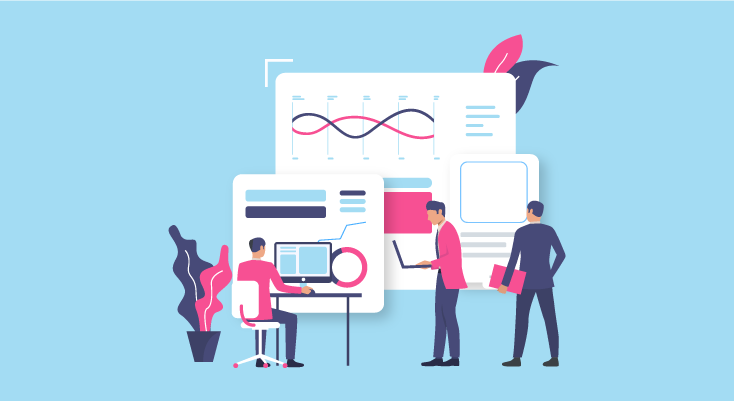In the vast digital landscape, where brands strive to make a mark, monitoring your brand’s online presence is no longer optional—it’s a necessity. Brand monitoring tool involves tracking and analyzing how your brand is perceived across various online platforms. This proactive approach not only protects your brand reputation but also unveils opportunities for growth and improvement.
Brand Monitoring Tool: The Power of Insights

Why Brand Monitoring Matters
1. Protecting Brand Reputation
In the age of social media dominance, news—both good and bad—travels fast. Brand monitoring acts as a shield, helping you catch wind of any negative sentiment before it becomes a storm. Timely responses to criticism can turn a potential crisis into an opportunity to showcase your brand’s dedication to customer satisfaction.
2. Identifying Brand Opportunities
Beyond crisis prevention, brand monitoring tools provide insights into positive discussions surrounding your brand. By understanding what resonates with your audience, you can leverage these insights to refine your marketing strategies and capitalize on areas where your brand excels.
Key Features of a Brand Monitoring Tool
Investing in a robust brand monitoring tool is pivotal. Here are some essential features to look for:
1. Real-time Tracking
A good brand monitoring tool keeps you in the loop with real-time updates. This ensures that you are promptly informed of any online mentions, allowing you to respond swiftly.
2. Social Media Monitoring
Social media is a significant arena for brand interactions. A monitoring tool should cover major platforms, tracking mentions, comments, and interactions to provide a comprehensive picture of your brand’s social presence.
3. Sentiment Analysis
Understanding the sentiment behind online mentions is crucial. Effective tools go beyond counting mentions and analyzing the tone to gauge whether the sentiment is positive, negative, or neutral.
4. Competitor Analysis
Staying ahead requires keeping an eye on competitors. The ability to compare your brand’s performance with that of competitors helps in identifying areas where you can outshine them.
Choosing the Right Brand Monitoring Tool
With numerous tools available, selecting the right one for your brand can be overwhelming. Consider factors such as your budget, the scale of your online presence, and specific features that align with your monitoring needs. Some popular options include AIM Insights, Mention, and Hootsuite.
How to Use a Brand Monitoring Tool Effectively
Owning a brand monitoring tool is just the first step. Effectiveness lies in how you utilize it:
1. Setting Up Alerts
Configure alerts to notify you of specific keywords or mentions. This ensures you stay informed about critical developments.
2. Analyzing Data
Collecting data is valuable, but the true power lies in how you analyze and interpret it. Identify patterns, trends, and areas for improvement based on the insights derived.
3. Taking Action Based on Insights
Brand monitoring is not a passive process. Use the insights gained to make informed decisions. Respond to customer feedback, address concerns, and celebrate positive feedback.
Benefits of Implementing Brand Monitoring
1. Improved Customer Relations
Engaging with your audience in real time builds trust and strengthens customer relationships. Acknowledging feedback—whether positive or negative—demonstrates your commitment to customer satisfaction.
2. Crisis Management
Being aware of potential issues before they escalate allows for proactive crisis management. Swift responses and transparent communication can mitigate the impact of negative situations.
3. Data-Driven Decision Making
Brand monitoring transforms raw data into actionable insights. Utilize these insights to shape marketing strategies, product development, and overall brand positioning.
Case Studies with Record-Breaking Success
Case Study 1: Nike’s Viral Campaign Monitoring
In 2018, Nike made headlines with their “Dream Crazy” campaign featuring Colin Kaepernick. By leveraging real-time brand monitoring tools, Nike was able to keep track of public sentiment as the campaign unfolded. Despite initial controversy, the tool helped them identify positive sentiment surges, particularly from their target demographic. Nike swiftly capitalized on these insights by amplifying key messages that resonated with their audience. The result? A 31% increase in online sales within days of the campaign launch—setting a record for one of the most successful brand turnarounds in recent memory.
Case Study 2: Wendy’s Roasts – Turning Engagement into Brand Growth
Wendy’s has made a name for itself with its witty Twitter “roasts” of both fans and competitors. With the help of a brand monitoring tool, they could quickly track trending mentions and join conversations, turning potentially negative mentions into engagement opportunities. In one instance, a user tweeted, “Wendy’s, roast me,” to which the brand replied with a well-timed quip that went viral, amassing hundreds of thousands of likes and retweets. The campaign helped Wendy’s increase brand engagement by 50%, while also attracting attention to their menu items.
Influencers’ Take on Brand Monitoring
Gary Vaynerchuk (@garyvee):
“If you’re not listening to the conversations around your brand, you’re missing the boat. Brand monitoring isn’t just about reacting; it’s about being proactive in building customer relationships.”
Neil Patel (@neilpatel):
“The insights you gain from brand monitoring tools can help you understand what works and what doesn’t in real-time. Use it to improve your marketing, product development, and even customer service.”
Ann Handley (@annhandley):
“Brand monitoring is like a pulse check on your audience. It helps you stay in tune with what people think and feel about your brand at any given moment.”
Challenges
1. Dealing with Negative Feedback
Negative feedback is inevitable. Effective brand monitoring involves not just identifying negative sentiment but also addressing it constructively.
2. Overcoming Data Overload
The wealth of data can be overwhelming. Tools with customizable dashboards and clear reporting help in managing and interpreting data effectively.
Future Trends
1. AI Integration
The future of brand monitoring involves advanced AI algorithms that can not only track mentions but also analyze complex data, providing deeper insights.
2. Cross-Channel Integration
Brands are no longer confined to a single platform. Future monitoring tools will seamlessly integrate data from various channels, providing a holistic view of your brand’s online presence.
Common Misconceptions
Addressing Myths and Clarifying Concepts
1. Myth: Only Big Brands Need Monitoring
Reality: Every brand, regardless of size, can benefit from monitoring. Small brands, in particular, can use it to compete more effectively.
2. Myth: It’s Too Complicated for Small Businesses
Reality: With user-friendly tools and simplified setups, brand monitoring is accessible to businesses of all sizes.
Tips for DIY Brand Monitoring
1. Small Business Approaches
Explore cost-effective monitoring tools suitable for small businesses, emphasizing the features most relevant to your needs.
2. Utilizing Free Tools
For those on a tight budget, consider free monitoring tools that still offer valuable insights. While they may not be as comprehensive, they can provide a starting point for brand monitoring.
Comparison of Brand Monitoring Tools
1. Side-by-Side Analysis
Compare the features, pricing, and user reviews of popular brand monitoring tools, helping you make an informed decision based on your specific requirements.
Conclusion
In a digital era where your brand’s reputation is as valuable as its products or services, brand monitoring emerges as a vital strategy. By actively listening to online conversations, leveraging the right tools, and responding to feedback, you not only safeguard your brand but also open doors to new opportunities. Stay vigilant, stay responsive, and let brand monitoring be your compass in the dynamic digital landscape.
Ready to take your brand monitoring to the next level? Request a demo from AIM Technologies and explore how our advanced solutions can elevate your brand management. Stay ahead in the digital realm—act now!
FAQs
Is brand monitoring only for large corporations?
- No, brand monitoring is beneficial for businesses of all sizes. Small businesses can use it to compete effectively and understand their audience better.
How often should I check my brand monitoring tools?
- Regular check-ins are recommended, especially during product launches, campaigns, or events. Real-time monitoring is essential for swift responses.
Can brand monitoring tools help with competitor analysis?
- Yes, many brand monitoring tools offer features for competitor analysis, allowing you to benchmark your performance against others in your industry.
Are there free brand monitoring tools available?
- Yes, there are free tools that provide basic monitoring features. While not as comprehensive as premium options, they can be a good starting point.
What is the role of AI in the future of brand monitoring?
- AI will play a crucial role in brand monitoring, providing more advanced analysis, predictive insights, and automation for more effective brand management.




